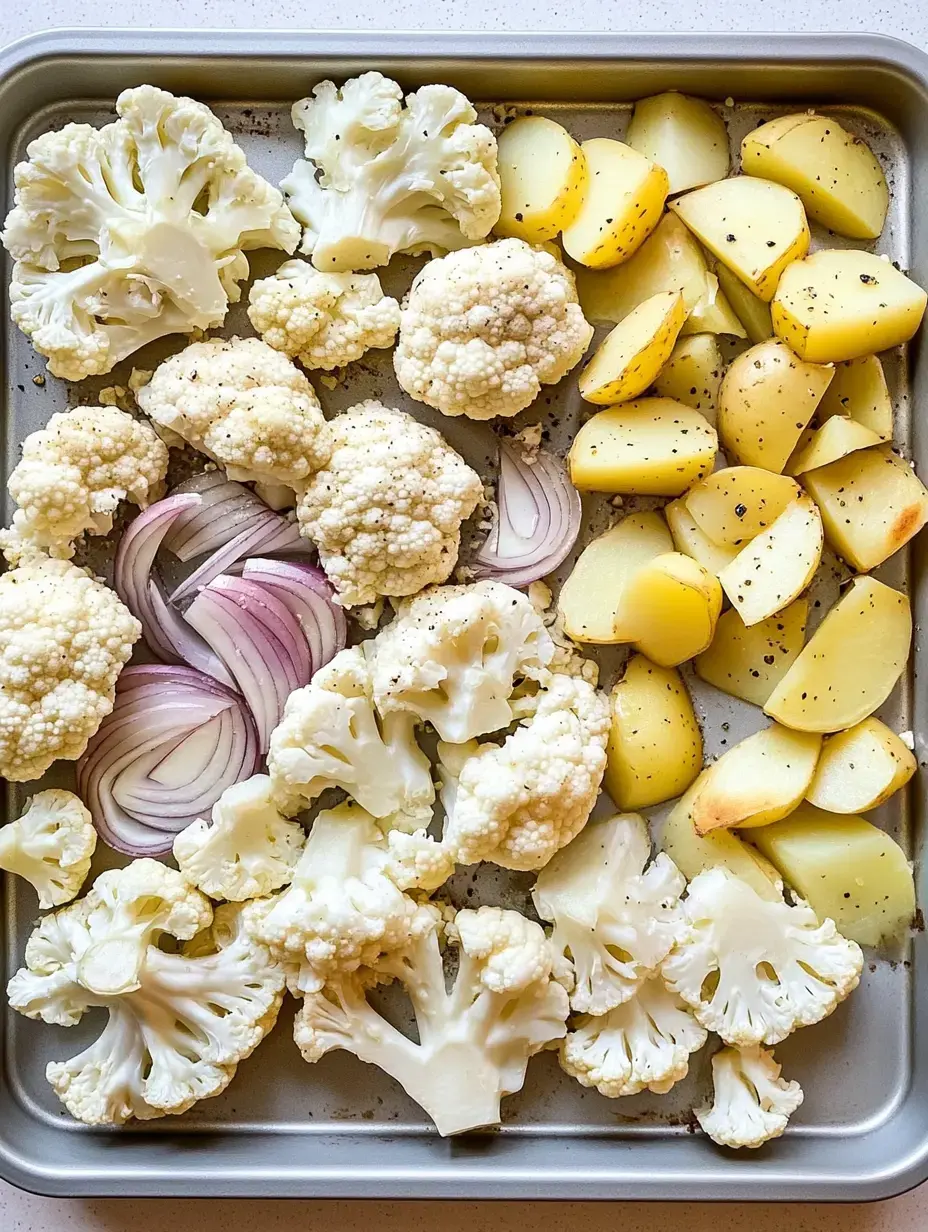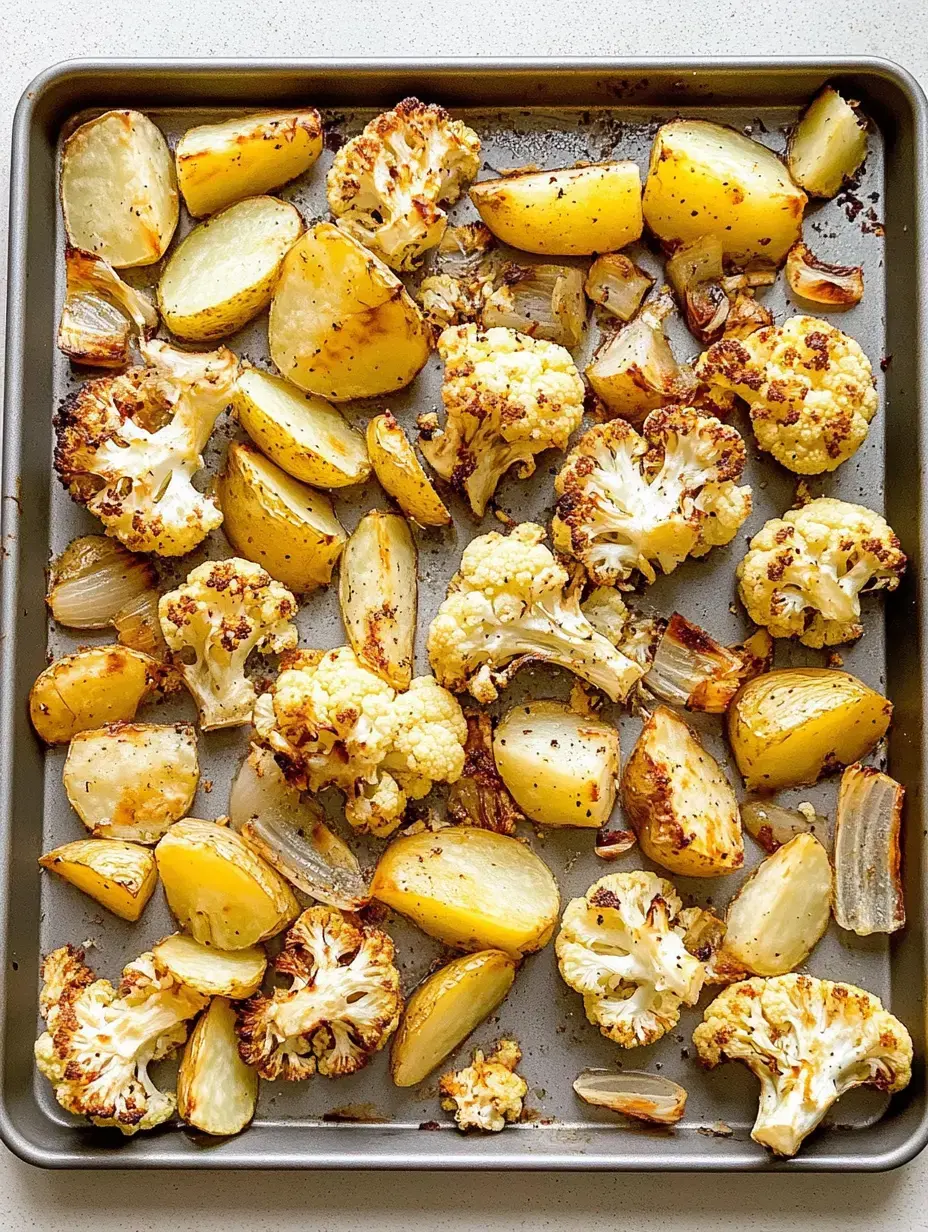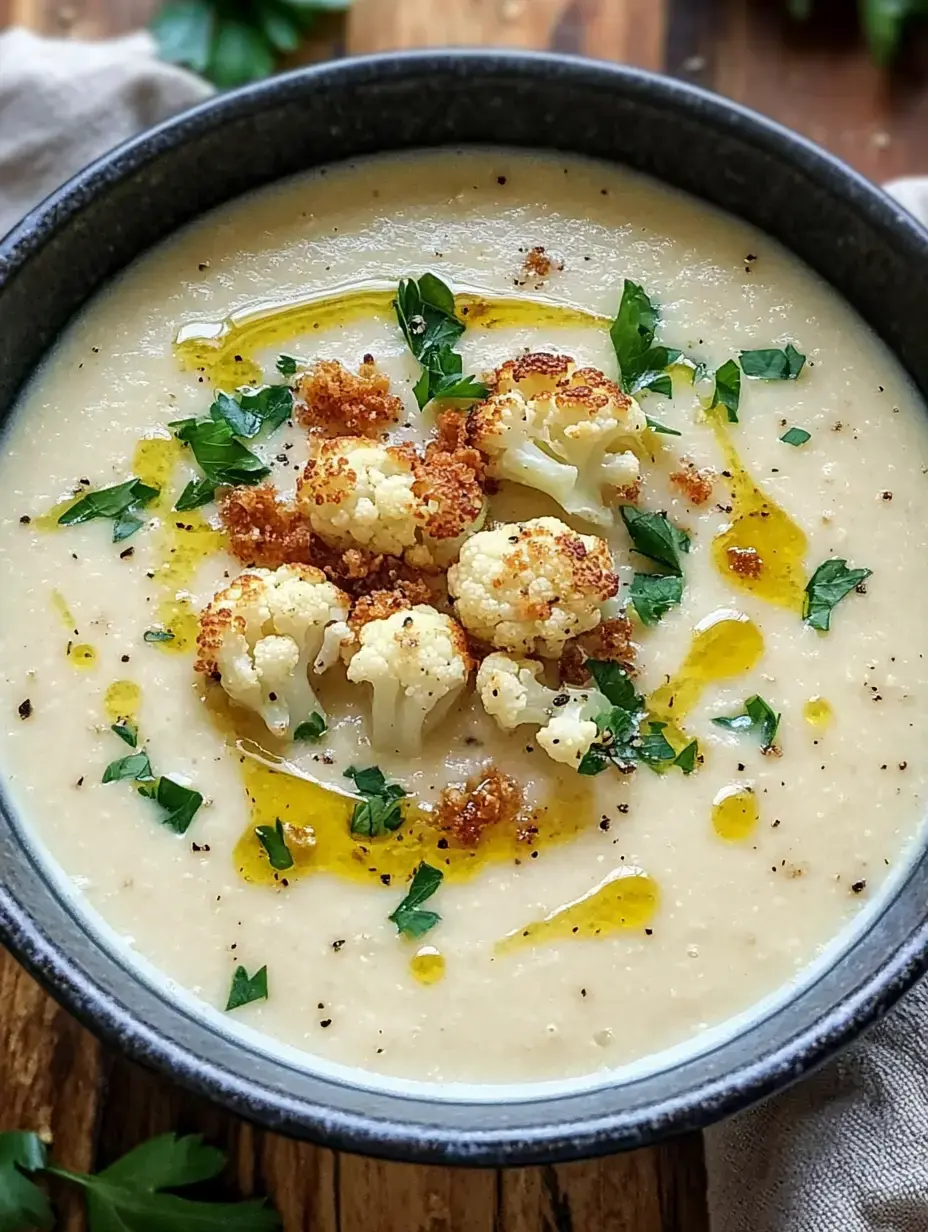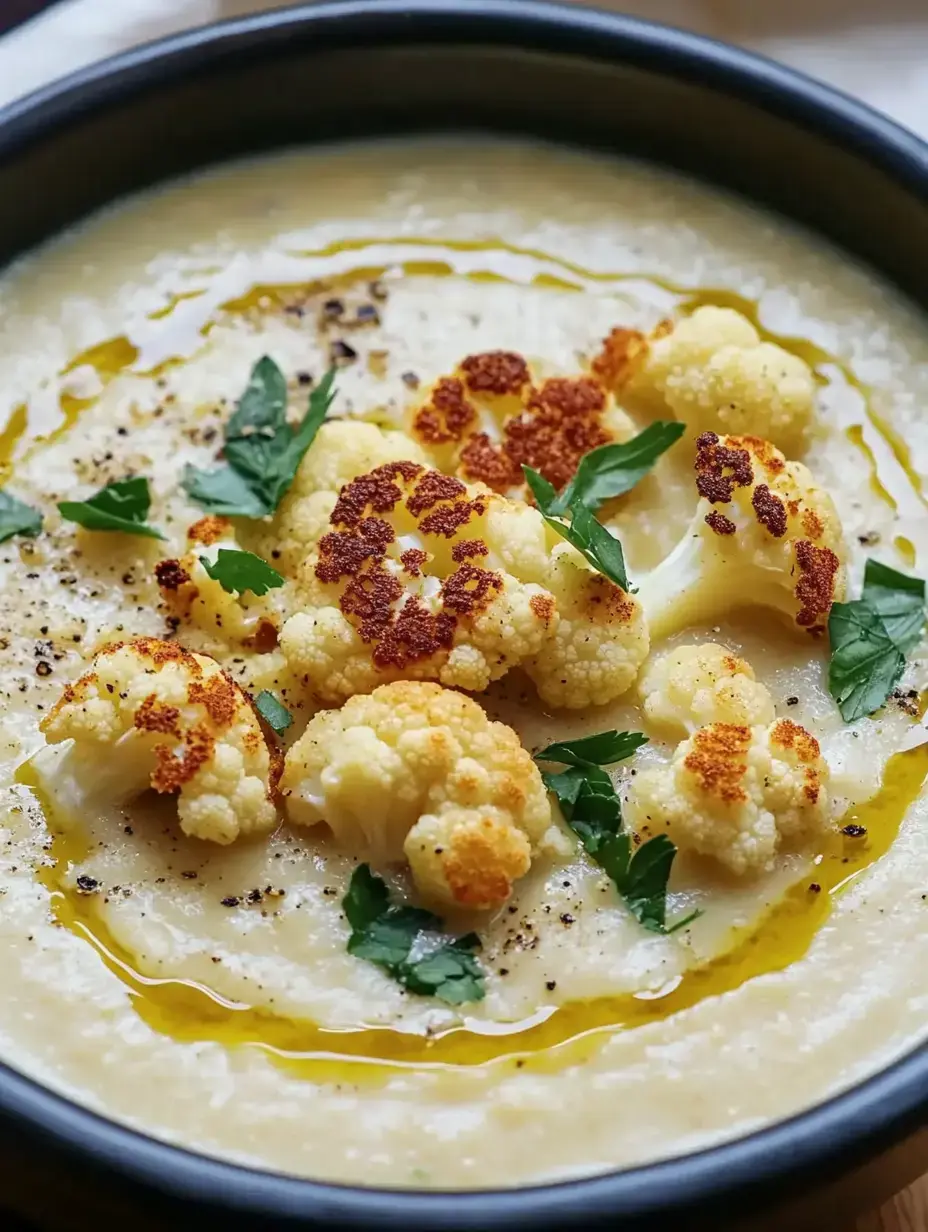 Pin it
Pin it
My cauliflower soup is the ultimate comfort food in my kitchen. When I roast the cauliflower in the oven, a wonderfully nutty smell fills the entire house. The velvety texture and rich flavor make this soup my go-to meal on chilly days. After trying different methods for years, I've finally found the perfect way to make it that I'm sharing with you today.
What makes cauliflower so special
In my cooking, I really value cauliflower for how flexible it is. It's not just low in calories but also packed with good nutrients. Roasting it in the oven brings out this amazing nutty taste that turns this soup into something truly outstanding.
My favorite ingredients
For my soup, I only use carefully picked ingredients. The cauliflower needs to be firm and white, showing it's fresh. Starchy potatoes give the soup its smooth texture. I always roast half a bulb of unpeeled garlic which adds a lovely mild flavor. I cut the shallots into quarters so they caramelize beautifully in the oven.
How I cook the soup
I set my oven to 180 degrees. While it warms up, I cut the cauliflower into bite-sized florets. I roughly cube the potatoes so they cook evenly with the cauliflower. Everything goes on a tray with good olive oil. After 45 minutes when the veggies are golden brown, I pour hot broth over them and blend until smooth.
The magic of roasting
Oven roasting makes a huge difference. The heat creates those wonderful roasted flavors and the cauliflower gets super soft. Sometimes I can't help snacking on a few florets straight from the tray - they're just too tempting.
Getting that creamy texture
Finding the perfect consistency is a real skill. I make sure the soup is silky but not too thick. A splash of broth here, a bit of simmering there until everything's just right. My years in the kitchen have taught me that taking your time really pays off.
 Pin it
Pin it
Spices from my kitchen
My spice mix gives the soup its rich flavor. A touch of nutmeg, some curry powder, and my secret trick - a pinch of cumin. Sometimes I add Middle Eastern spices too. Fresh herbs from my garden round out the taste nicely.
What I serve with it
I always pair my cauliflower soup with fresh baguette. The crispy crust works perfectly for dipping. Sometimes I fry bacon bits until crispy or sprinkle on some toasted onions. A green salad makes the meal complete.
Easy storage tips
This soup actually tastes even better the next day. It keeps well in the fridge for about three days. When reheating, I add a splash of broth to bring back its creamy texture.
Stock for cold days
I always keep some cauliflower soup in my freezer. Once it cools down, I put it in suitable containers. When I thaw it later, I stir in a bit of fresh cream and it tastes like I just made it.
When friends come over
For special occasions, I fancy up the soup with a drop of truffle oil. A dollop of homemade herb crème fraîche and some toasted almond slivers turn it into a festive dish. My guests always ask for the recipe.
Kid-friendly version
My kids love a milder version of this soup. I cut back on the spices and add more cream. I top it with cheese croutons in fun shapes and the little ones can't get enough. It's a sneaky way to get them to enjoy veggies.
 Pin it
Pin it
My vegan approach
I often use coconut milk instead of cream which makes the soup incredibly creamy. A squeeze of lemon juice adds freshness. Even my non-vegan friends are amazed by this version every time they try it.
Lighter options
If you're watching carbs, you can skip the potatoes. I use more cauliflower stems instead which also create a nice creaminess. The flavor stays rich and the soup becomes even lighter.
New flavor directions
I love trying new things in my kitchen. Sometimes I roast extra garlic, grate in some lemon zest, or add grated parmesan. With ginger and soy sauce, it turns into an Asian-inspired version.
Finding the best cauliflower
At the market, I look for cauliflower with a firm white head and fresh green leaves. It stays fresh in the fridge for several days. The quality of your vegetables really makes a difference in the finished soup.
Prime time for cauliflower
Cauliflower season runs from May through November. That's when the soup tastes most flavorful. In fall, I like mixing in pumpkin or parsnips for extra layers of flavor.
Why I roast everything
Roasting is my favorite step. The veggies caramelize naturally in the oven and develop deep flavors. This depth makes my soup truly stand out.
 Pin it
Pin it
Small extras big impact
A few fresh herbs from my garden, toasted pumpkin seeds, or a drizzle of good olive oil transform the soup into something special. Homemade croutons add a nice crunchy contrast.
Tasty and nutritious
Cauliflower is full of good stuff. This soup isn't just filling but also good for you. Without cream, it's wonderfully light - perfect after a long day.
When time is short
On busy days, I make a quick version. The florets go straight into the broth and everything's done in 20 minutes. The flavor's different but still delicious.
Middle Eastern twist
With cumin and ras el hanout, the soup takes on Middle Eastern flavors. Pomegranate seeds and fresh mint on top add beautiful color. This version reminds me of my travels through the Middle East.
A dish for company
This soup is perfect when having guests over. I make it ahead and reheat it later. Garnished with fancy toppings, it becomes the highlight of any dinner.
Colorful soup combinations
Sometimes I serve different soups together. A bit of pumpkin soup here, some carrot soup there. It not only looks great but also offers exciting flavor combinations.
 Pin it
Pin it
Creative ways with leftovers
I love turning leftover soup into new dishes. It works great as a pasta sauce or adds flavor to my casseroles. With a bit of cream, it becomes an amazing base for gratins. Nothing goes to waste in my kitchen, and leftovers often turn into the most creative meals.
Frequently Asked Questions
- → What's the point of roasting the veggies?
Baking in the oven makes those veggies taste nutty and richer. It amps up the whole soup with loads of flavor.
- → How do I get a nice thick soup?
Start with less broth, then add more after everything’s blended to hit the texture you like. It changes depending on your cauliflower size.
- → Is it possible to keep it plant-based?
Totally! Swap coconut milk for cream. Or just skip both—the soup’s nice and creamy anyway.
- → How long will it stay good in the fridge?
You’re safe for 2–3 days in the fridge. Add a splash of water when you warm it up and give it a good stir.
- → Got any tips for a neat topping?
Try tossing on roasted cauliflower bits, herbs, extra olive oil, or crunchy almonds or pumpkin seeds.
